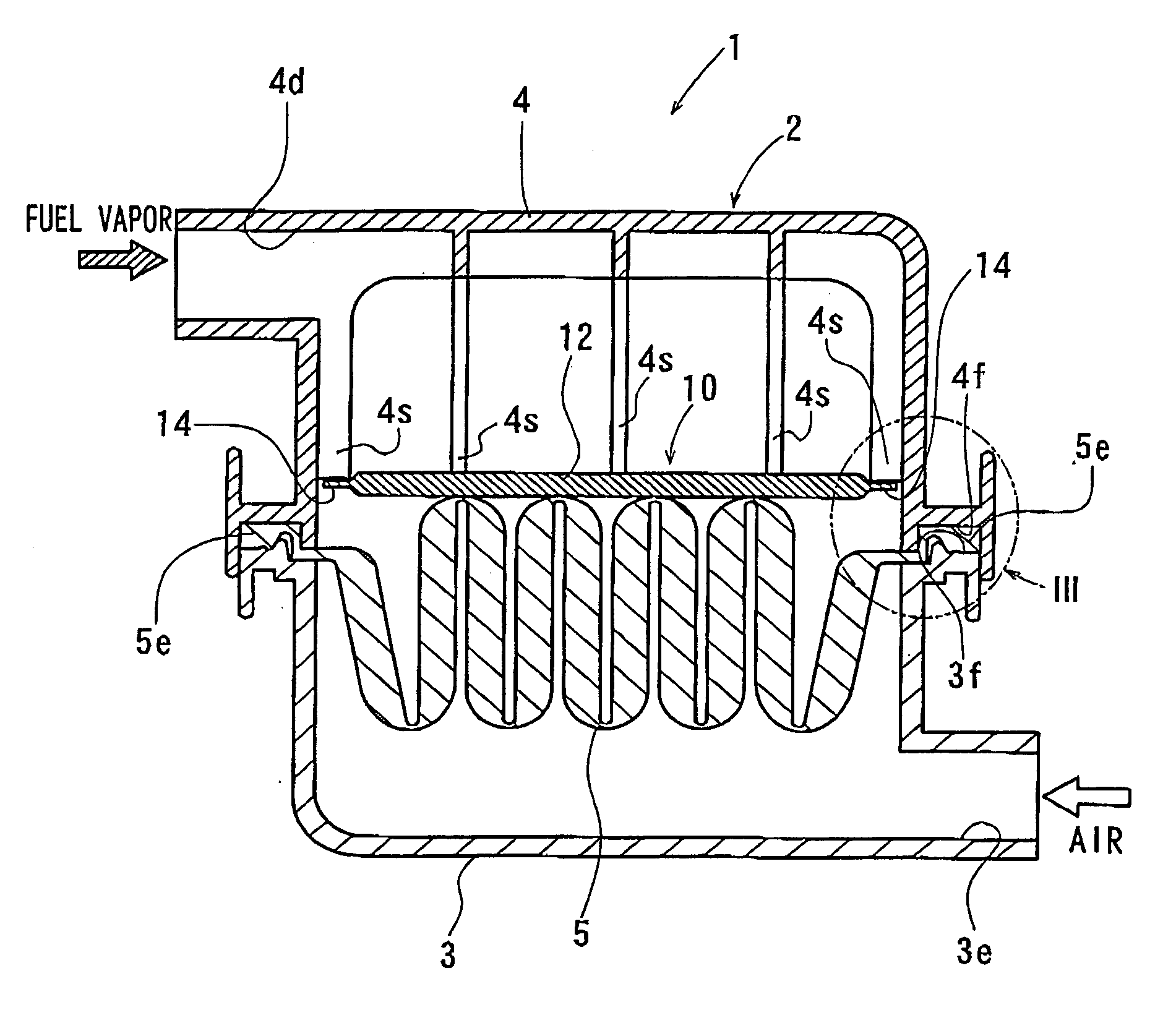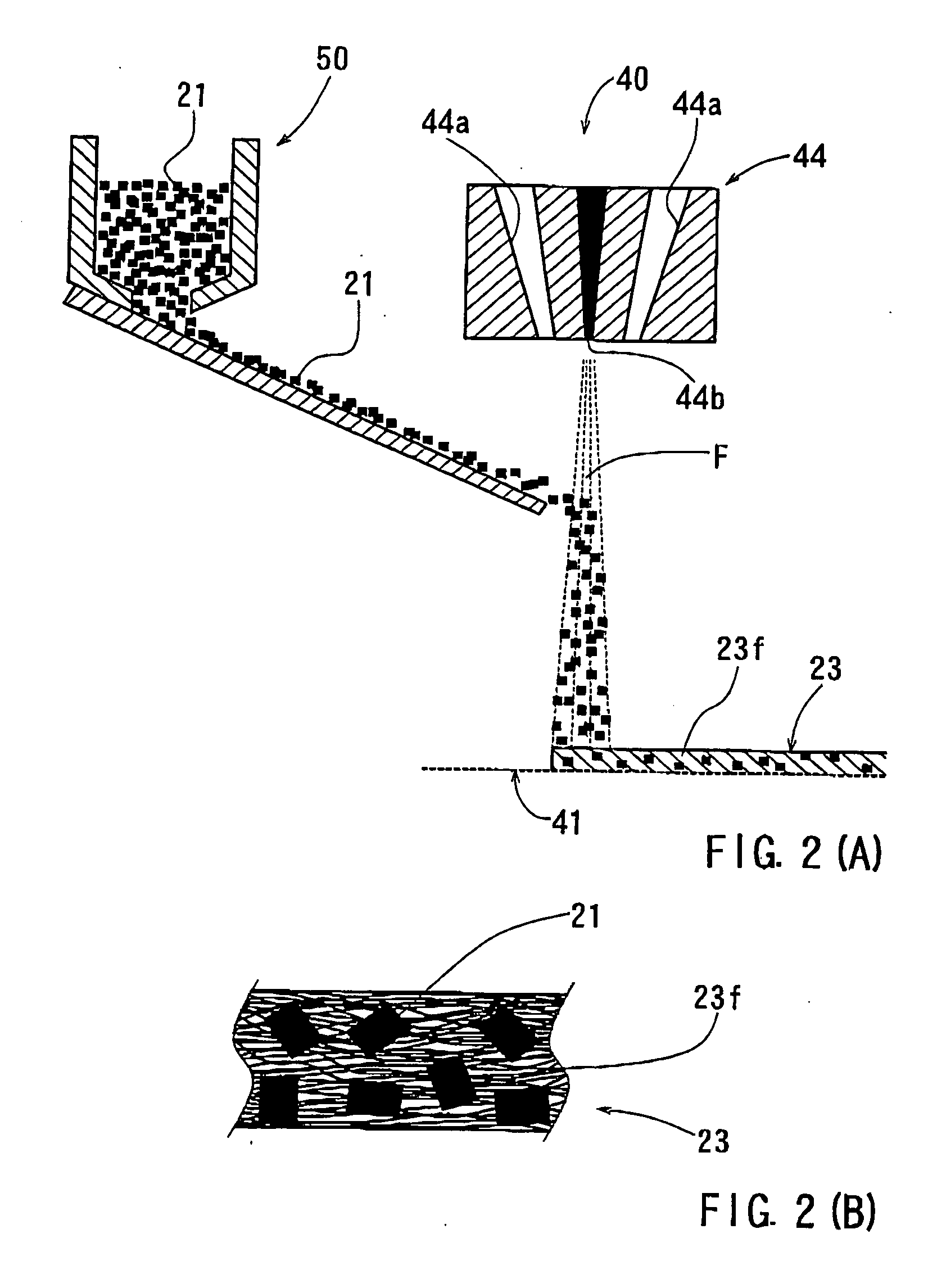Fuel vapor adsorption filters
a technology of adsorption filter and fuel vapor, which is applied in the direction of machine/engine, combustion air/fuel air treatment, separation process, etc., can solve the problems of increasing manufacturing costs and potential leakage of fuel vapor through the edge, and achieve the effect of improving fuel vapor adsorption performance and reducing cos
- Summary
- Abstract
- Description
- Claims
- Application Information
AI Technical Summary
Benefits of technology
Problems solved by technology
Method used
Image
Examples
first representative embodiment
[0031] A first representative embodiment of the present invention will now be described with reference to FIGS. 1 to 5. Referring to FIG. 4, an air cleaner 1 is shown that includes a fuel vapor adsorption filter 10.
[0032] The air cleaner 1 has a housing 2 that is molded from a synthetic resin. The housing 2 includes a lower housing 3 and an upper housing 4 that respectively have an inlet port 3e and an outlet port 4d. The upper side of the lower housing 3 and the lower side of the upper housing 4 are open. An air cleaner element 5 has an outer peripheral frame 5e that is clamped between an open edge 3f of the lower housing 3 and an open edge 4f of the upper housing 4 as shown in FIG. 3. With this arrangement, the air cleaner element 5 is fixed in position so as to extend across the space within the housing 2 in order to filter intake air that is supplied to an engine (not shown).
[0033] The fuel vapor adsorption filter 10 is mounted within the housing 2 and is disposed on the downs...
second representative embodiment
[0047] A second representative embodiment will now be described in connection with FIGS. 6 to 9. This representative embodiment is a modification of the first representative embodiment. Therefore, like members are given the same reference numerals as in the first representative embodiment and the description of these members may not be repeated.
[0048] As described above, according to the first representative embodiment, the cover layers 24 of the fuel vapor adsorption filter 10 are formed by laying the formed resin fibers of the non-woven fabric 24f, which are formed by the non-woven fabric manufacturing apparatus that has the same construction as the non-woven fabric manufacturing apparatus 40, above and below the non-woven fabric 23f of the holding layer 23. Therefore, the resin fibers F of the holding layer 23 and the resin fibers of the cover layers 24 may be naturally bonded to each other during the overlaying process. However, in case of relatively small boding forces between...
PUM
| Property | Measurement | Unit |
|---|---|---|
| thickness | aaaaa | aaaaa |
| melting point | aaaaa | aaaaa |
| diameter | aaaaa | aaaaa |
Abstract
Description
Claims
Application Information
 Login to View More
Login to View More - R&D
- Intellectual Property
- Life Sciences
- Materials
- Tech Scout
- Unparalleled Data Quality
- Higher Quality Content
- 60% Fewer Hallucinations
Browse by: Latest US Patents, China's latest patents, Technical Efficacy Thesaurus, Application Domain, Technology Topic, Popular Technical Reports.
© 2025 PatSnap. All rights reserved.Legal|Privacy policy|Modern Slavery Act Transparency Statement|Sitemap|About US| Contact US: help@patsnap.com



